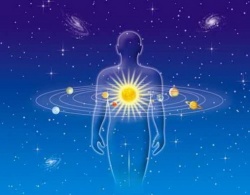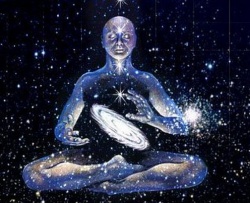Geomancy
In Europe during the Renaissance, geomancy was classified as one of the seven “forbidden arts”, along with necromancy, hydromancy, aeromancy, pyromancy, chiromancy (palmistry), and spatulamancy (scapulimancy).
Geomancy is an Art of Divination, whereby the judgement may be rendered by lot, or destiny, to every question of everything whatsoever, but the Art here of consisteth especially in certain points whereof certain figures are deducted according to the reason or rule of equality or inequality, likeness or unlikeness
–Henry Cornelius AGRIPPA
“Geomancy” is derived from the Latin “geomantia,” which in turn is derived from the Greek for “divination by earth.”
The Arabic name for geomancy, “'ilm al-raml,” means “the science of the sand.”
In its original form, the geomantic figure was created by making lines of random numbers of dots in the sand, hence the name.
Medieval European writers agreed that it was also acceptable to draw the dots on a piece of parchment or paper.
In keeping with the Arabic origin of geomancy, most writers recommend making the dots from right to left, the direction in which Arabic is written.
From the dots or points, the geomancer draws a series of figures which are arranged into the geomantic tableau.
There are sixteen possible figures consisting of single or pairs of points.
Each figure has a name, associations with the elements, planets, etc., and good or bad qualities.
Interpretation depends on the meanings of the figures in particular locations in the tableau, and owes a great deal to the practice of medieval astrology.
Unlike astrology, however, geomancy requires no instruments or complex calculations.
The art of geomancy had been practiced in many different cultures of the world, until it gradually got lost in the western world over the past century.
No longer was matter seen as a form of energy, as something with its own life and soul, but as something static and lifeless.
In Europe the art of geomancy has been practiced for thousands of years. Our ancestors used to be in deep contact with the surrounding energies and elemental beings, believing in a mystic and magical world.
In those days, the knowledge of the energies of earth was perceived with much greater awareness.
Before the Christianization, the Germanic and Celtic tribes lived in intuitive connection with mother earth.
The inquisition then destroyed a great part of this knowledge, making use of fear and violence.
Not only palaces and estates, but also particularly monasteries and churches were built in natural places of spiritual energy.
The mighty did not want to miss the benefit gained from such a special place.
The architecture of the time comprised and took advantage of the landscape's potency when choosing their building sites.
Up to this day it is possible to feel the uplifting energy of those unique places.
Openness for the energies of the earth
Even simple people used to be sensitive and open to the energies of the earth and their surroundings.
In the 'Allgäu' region in Bavaria, for example, farmers used to successfully cure their children from bedwetting by placing a mirror face-down on the ground – an effective method up to this day, which however needs to be applied with care.
Sanctification of places
In China, geomancy has a great tradition. Taoism extensively deals with the mastering of energies, including the earth's energy which ensouls stones, mountains, plants, and water.
In old China taoistic geomancy masters were traditionally called to sanctify a place before purchasing it or building on it.
Moreover, these masters cleanse living space from disease and misfortune, because such incidents can be accumulated over a long period of time and have negative effects on subsequent inhabitants.
Worshipping the mountains
From China this art spread out to many Asian countries.
In Bhutan, the art of geomancy 'Tsepa', as well as carpentry, still belongs to the twelve traditional arts.
In old Tibet, the locals used to worship the mountains and avoided to harm them.
In case it was a necessary to dig into the mountain, this was prepared with rituals and immolations.
Even today Tibetans believe that mountains have a soul, represented by a kind of mountain king.
In their view, a mountain becomes dull and powerless, if the mountain king does not feel well and moves away.
There are stories of locals who were able to see these kings.
Apparently a big number of the mountain kings disappeared after the Chinese occupation, as the Chinese were starting to dig for gold and other resources.
Respect for the power of nature
In India, trees are still worshipped as beings and deities. Offerings are made to them and particular rituals are performed.
The special connection of Native Indians from North America with nature is as known as the shamanic abilities and sensibility of the Indians from South America.
Whether you look at the Aborigines in Australia, the Maoris in New Zealand, different tribes in Afrika, the tribes of the Eskimo, the Kahunas of Hawaii, or even people of Russia and Arabia,
you will find a deep appreciation and respect for the power of nature and certain rituals and skills to harmonize with it.
The Tao of change
Slowly the western world is also beginning to realize that all matter is to be seen as a free act of energies which are in constant movement and change.
It is influenced by thoughts and feelings and is not as solid, permanent, and static as the western consciousness still mainly perceives it.
Without constant change, nothing would be perceivable.
Life would be like a picture, not like a movie. Everything in our universe is flooded with love and life!

